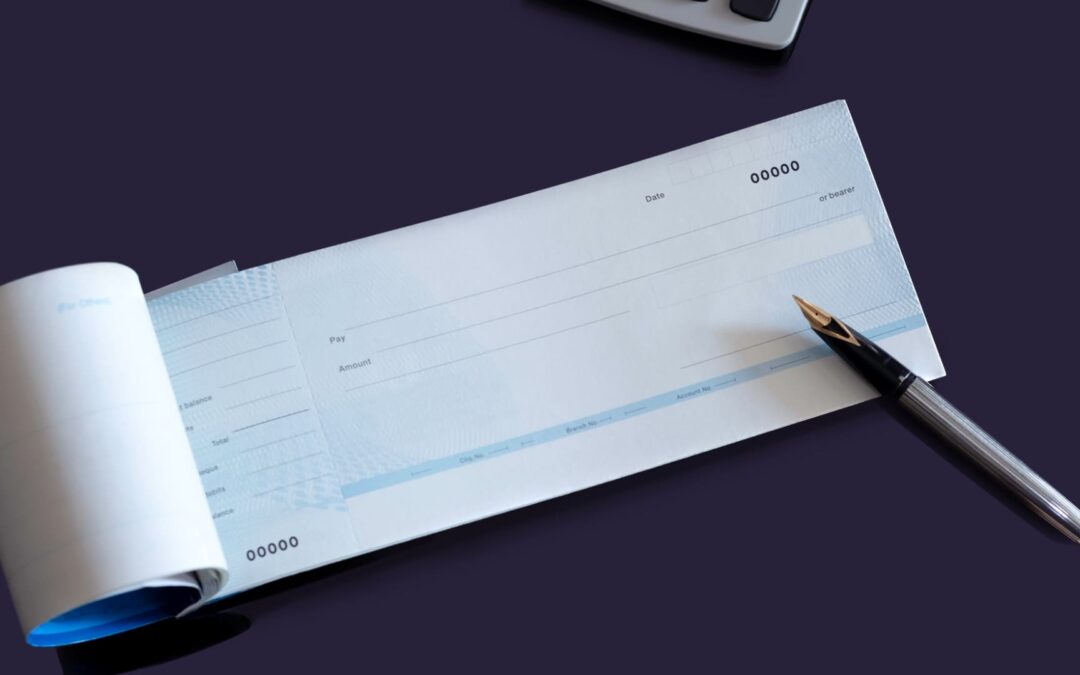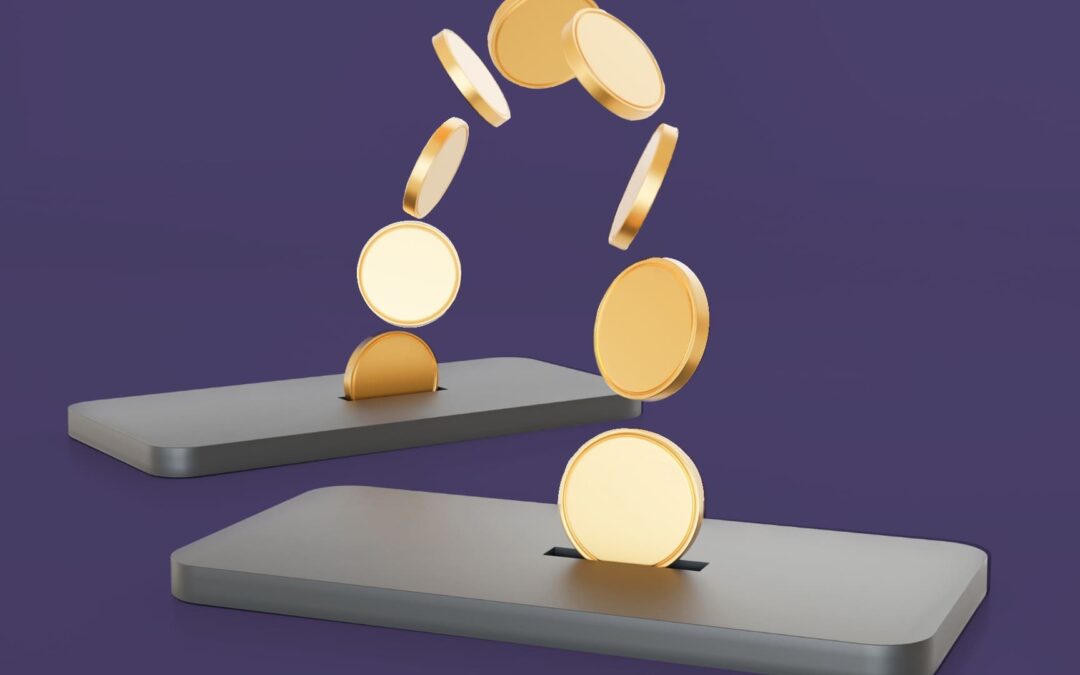
by Sathvik Nagraj | Mar 10, 2023 | Savings
Are you wondering how to get rid of debt? If so, then be patient and read on to explore strategies to do so.
Budgeting and reprioritizing debt payments can make debt repayment more manageable and thus faster. We can also include strategies like Debt Snowball Method.
Furthermore, there are many benefits of becoming debt-free sooner rather than later. It should encourage anyone deeply in debt to take action today!
Tips to Clear off Your Debts Quickly
Here are key tips to get rid of your debt soon!
1. Budgeting:
One of the most important debt reduction strategies is to create a budget and stick to it. This means tracking all of your income and expenses, as well as finding ways to reduce spending in order to put more money towards debt repayment.
Budgets should be realistic and achievable in order for them to be successful. A good budget will also include setting aside money for an emergency fund, retirement savings, and other financial goals that are important to the debtors.
This debt reduction strategy involves focusing on paying off your smallest debt balance first while making minimum payments on larger debts.
By doing this, it allows debtors to gain peace of mind knowing that debt is being paid off faster than if one were to make minimum payments on all debt balances.
However, debtors should keep in mind that the interest rates attached to debt may still be making it more difficult to pay down certain debts first.
Making Debt Repayments More Manageable
Paying back your debts is definitely not an easy task. Hence, we have come up with proven tips to make it more manageable and sane.
Utilise debt consolidation
Debt consolidation is a debt reduction strategy that involves taking out a loan to pay off multiple debts, such as credit card debt or student loans.
This debt reduction strategy can help debtors simplify their debt repayment process by combining multiple debt payments into one affordable monthly payment.
Increase debt repayment
Debtors can also increase debt repayment by making additional payments towards debt balances each month.
This debt reduction strategy not only helps reduce debt faster but it can also help debtors save money on interest payments in the long run.
In addition, debtors should consider negotiating with creditors to lower their interest rates in order to make debt repayment easier.
3. Build an emergency fund:
An emergency fund is a debt reduction strategy that involves setting aside money in case of unexpected expenses.
This debt reduction strategy can help debtors stay on track with debt repayment by providing them with additional funds to cover any unplanned costs that may arise.
4. Stay motivated:
Staying motivated to pay off debt is key in order for debtors to successfully become debt free. Setting short-term and long-term debt repayment goals can be a great way to stay on track with debt repayment.
In addition, debtors should practice positive self-talk and reward themselves after each debt milestone achieved.
The Debt Snowball Method:
- Break free from debt with the powerful snowball method, which involves paying off your smallest debt balances first while making minimum payments on larger debts.
- Not only will you be able to rest easy knowing that your debt is steadily getting smaller, but it can also help speed up the process of becoming financially independent!
- Put this strategy into play and watch as you become liberated from looming bills faster than by just making their minimum payments.
- Additionally, debtors should consider utilising debt consolidation and increasing debt repayment by making additional payments towards debt balances each month.
- Lastly, building an emergency fund and staying motivated with debt repayment can help debtors stay on track with their debt reduction goals.
These debt reduction strategies can help debtors reduce debt fast and save money in the long run. With these tips, debtors can clear debt quickly and easily without the worry or stress associated with debt.
Conclusion
Debt can be a scary and intimidating thing, but it doesn’t have to stay that way forever. By utilizing debt reduction strategies like the debt snowball method, debt consolidation and building an emergency fund, you can get rid of debts quickly and easily without worry or stress.
The benefits of being debt free include reducing stress levels related to debt collection calls as well as saving money in the long run by paying off debts faster.
With these tips on how to reduce debt fast at your disposal you are sure to get out from under any mountain of financial woes in no time!

by Sathvik Nagraj | Mar 7, 2023 | Investment
Investing like a millionaire is the dream of many people, but it often seems out of reach. However, with the right knowledge and strategies, anyone can start investing in ways that will bring them closer to achieving their financial goals.
In this article we’ll take an in-depth look at where millionaires invest their money. We’ll explore the strategies used by millionaires when investing in different areas and provide tips on how you too can start investing like a millionaire.
So read on for more information about following the path of rich investors!
Also check out our article on the money market instruments in India!
Where do Millionaires Invest?
Here are the top options millionaires choose to invest in to get rich.
Stocks
- When it comes to where millionaires invest their money, stocks are often the first thing that comes to mind.
- This is because stocks offer a good balance of risk and reward. It also has potential for high returns in the long-term.
- Millionaires often choose to invest in blue-chip stocks – those from large, established companies that are likely to continue being successful. They also diversify their portfolios with a variety of stocks from different industries.
Bonds
- Bonds are another popular investment option for millionaires, as they provide a steady stream of income while remaining relatively low-risk.
- There are two main types of bonds: corporate bonds, which offer returns from the issuing company, and government bonds, which offer returns from governments.
- Bonds can provide a steady stream of income over time, making them an attractive investment option for millionaires.
Mutual Funds
- Mutual funds are a type of professionally managed portfolio that allow investors to pool their money together in order to purchase stocks, bonds and other investments.
- The funds are managed by professional investors, meaning that the risk/reward ratio is generally quite low.
- Mutual funds can also provide diversification and higher returns than individual investments, making them an attractive option for millionaires.
Real Estate Investments:
- Millionaires often choose to invest in real estate as it can bring a steady stream of income and has the potential to appreciate in value over time.
- Real estate investments can include buying and renting out property, flipping houses, investing in commercial real estate or developing land.
- Due to their low risk and high return potential, many millionaires choose to invest in real estate as part of their portfolio.
Venture capital
- Venture capital is a form of private investment that involves providing capital to young, high-growth companies in exchange for equity or an ownership stake.
- The goal of venture capital is to generate returns from the growth and development of these companies over time.
- Venture capital has become increasingly popular in recent years due to its potential for higher returns than more traditional investments.
Collectibles
- Collectibles are a unique type of investment that can be an attractive option for wealthy individuals looking for something different.
- Collectibles are items of value that have been collected over the years, such as artwork, antiques, stamps, coins and even sports memorabilia.
- The value of these items can increase over time, making them an attractive option for millionaires looking to diversify their portfolios.
To read more and invest in financial instruments, check out our article on the Indian Stock Market and its regulation.
How to Invest like a Millionaire?
When it comes to investing, millionaires often employ a variety of strategies in order to maximise their returns and minimise their risk.
One of the most popular strategies used by millionaires is diversification. By diversifying their portfolios, millionaires are able to spread out the risk associated with investing and reduce the potential for large losses.
This means that even if one investment does not perform as expected, their portfolio can still remain relatively balanced.
It is important to remember that investing like a millionaire takes time and effort. Rich people often being investing at a young age to grow their wealth, as wealth compounds over time.
Researching potential investments, monitoring the markets, and making adjustments along the way are all essential components of successful investing.
With these tips in mind, you can start building your own portfolio with the same strategies used by millionaires.
Millionaires often use credit to finance their daily operations. Read how credit cards can benefit you.
Conclusion
Millionaires employ a variety of strategies when investing their money, from diversifying portfolios to venture capital investments. Investing like a millionaire takes time and effort; it involves researching potential investments, monitoring the markets, and making adjustments as needed.
By leveraging these same strategies used by millionaires, you can start building your own portfolio that is tailored to meet your investment goals and objectives.
With knowledge about where millionaires invest their money and how they approach investing decisions, you’ll be on the path towards financial success in no time.

by Sathvik Nagraj | Mar 7, 2023 | Investment
Are you familiar with the term ‘MICR code’? It stands for Magnetic Ink Character Recognition, a unique number found on cheques and other financial documents used for clearing and settlement purposes.
In this article, we will explain what the MICR code is and how to find it on a cheque.
We’ll also discuss the benefits of using this system for clearing and settlement purposes as well as tips to ensure accuracy when entering or reading an them.
So if you are interested in learning more about what a MICR code is and its uses, read on!
Also check out our article about the IFSC code here.
How to Find the MICR code?
- Look to the bottom of a check for your MICR code. This string of nine-to-twelve digits will be printed in Magnetic Ink Character Recognition font.
- By simply scanning the first three digits of a MICR code, you can precisely identify where the bank’s branch is situated.
- The bank code is represented by the middle three digits..
- The last three digits signify the differentiating the branch code of a person’s bank or other fiscal institution.
- Financial institutions, such as banks and credit unions, employ the codes to expedite the process of clearing and settling cheques. This may also involve any other transaction having any money transfer between two different organisations.
Components of MICR code
- Numerical numbers from nine to twelve make up the MICR code.
- The initial three digits indicate the city of your financial institution’s branch, with the mid-portion holding three numerals for bank coding. The additional set of three reveals your branch code.
- The Magnetic Ink Character Recognition font is printed on the codes to make sure that cheques and other financial documents are processed correctly. This extraordinary font has been specifically designed for machines to read. Hence, it guarantees the accuracy of transactions made with these types of documents.
- Banks and other financial entities utilise MICR codes to expedite the cheque clearance procedure, as well as transactions related with transferring funds from one establishment to another. This enables a smoother process that requires less effort and time for successful completion.
The Uses of Implementing the MICR code system
Here are some of the benefits and how using the MICR code system will help the economy and the people:
Streamlining
The MICR system offers a convenient and efficient solution for settling money transfers between institutions. It helps smoothen the processing of cheques as well as other financial transactions, making it easier to transfer funds securely.
Accuracy
This system provides a secure and precise way to process cheques and other financial documents. It guarantees that each transaction is correct, leaving no room for errors or mistakes.
Efficient
Utilising MICR codes can save time, money and further protect your data from potential threats. This solution will change the way you process information efficiently and cheaply.
Tracking
Thanks to MICR technology, tracking and tracing payments has never been easier; consequently, overall financial transactions are now more efficient.
Conclusion
The Magnetic Ink Character Recognition (MICR) system is a reliable and efficient way to process cheques, financial documents, and money transfers with greater accuracy. MICR codes are printed in a unique font designed for specialised machines that help ensure the correct processing of payments.
Banks and other financial institutions use it to streamline the clearing and settlement process while also reducing costs and improving security.
By understanding what a it is, how to find it on a cheque, its components, benefits, and uses – you can now confidently leverage this powerful tool when entering or reading an MICR code.

by Sathvik Nagraj | Mar 7, 2023 | Investment
A Permanent Account Number (PAN) card is an essential tool for students in the modern world. Not only does a Student PAN card allow students to open bank accounts, apply for loans and pay taxes, but it can also be used to avail government scholarships and other benefits.
In this article, we will discuss the use of PAN cards by students, explain how to apply for student PAN cards online and provide tips on ways in which they can use their PAN cards responsibly.
We will also outline the importance of having a PAN card as a student and provide advice on managing finances with its help.
How to Apply for a Student PAN card online?
- Review the PAN card filing instructions here
- From the drop-down box, choose “Application Type” > “New PAN – Indian Citizen (Form 49A)” and “Category” > “Individual”.
- Complete the needed fields on the PAN card application form, including name, email address, phone number, date of birth, and captcha code, and then click the “Submit” button.
- Choose the “Submit digitally with e-KYC and e-Sign,” “Submit scanned pictures through e-Sign,” or “Send application materials physically” option.
- Type in your personal information, parent information, contact information, and AO code, then click the “Next” button.
- Upload the necessary files, make the appropriate payment, and press the “Submit” button.
- It will produce the acknowledgment number, which students can use to check the status of their PAN application online.
- After choosing to “Send application materials physically,” the applicant must attach a current photo to the printed application form, place all necessary paperwork inside an envelope, and mail the package to the NSDL e-Gov office in Pune.
- If the option to “Submit digitally using e-KYC and e-Sign” or “Submit scanned pictures through e-Sign” is chosen, no physical delivery of the papers is required. The application filed online will be checked by the relevant authority.
- The PAN card will be mailed to the students once the application has been verified within 10-15 days.
Process to Apply Offline
1. From the official NSDL website, get Form 49A, the PAN Application.
2. Read the Form 49A’s filling instructions that are provided underneath the form.
3. Complete the form by entering all the necessary information as directed.
4. Provide a copy of the necessary paperwork.
5. Deliver the application form, the required paperwork, and the required money to the nearby NSDL/UTIITSL office or TIN facilitation centre.
6. The students will be given an acknowledgement number when they submit their applications, which they can use to check on the application’s progress.
7. The PAN card will be sent to the student’s address following the PAN application’s successful verification.
What to Remember While Filling out the Application?
- Ensure that you have all the required documents such as Aadhaar card, proof of address, and proof of identity.
- Make sure the name and other details in the application form match with those on your documents.
- Double-check the application form for errors before submitting it.
- Be prepared to provide biometric information such as fingerprints and iris scans.
- Verify that the PAN card application fee has been paid.
- Keep track of the application status using the acknowledgment number provided after submitting the application.
- If you face any issues during the application process, contact the relevant authorities for assistance.
Benefits of Having a PAN card as a Student
- Easy Access to banking services
- Easier payments
- Opportunities for Student Travel
- Access to E-KYC services
- Avail Governmental services efficiently.
- Build Credit Score
Tips on using a PAN card responsibly
Once students get their PAN card, they should use it responsibly and take necessary steps to ensure its safety. Here are some tips:
- Protect your PAN card details like you would any other confidential information. Do not share it with anyone or use it for fraudulent activities.
- Make use of the PAN card whenever it is required for financial transactions or governmental services.
- Ensure that your PAN card is updated with the latest information, such as your address and other details, to avoid any confusion when making payments.
- Keep track of your expenses and use a PAN card responsibly to build a good credit score.
- If you lose your PAN card, report it to the concerned authorities immediately and apply for a new one.
Conclusion
In conclusion, having a PAN card is essential for students as it allows them to access banking services, use online payment gateways and avail governmental benefits.
Applying for a student PAN card can also help build a good credit score over time. It is important that students use their PAN cards responsibly by protecting the details associated with it and keeping track of expenses.
If you have lost your PAN card or need to update its information, make sure to report it immediately and apply for a new one right away.

by Sathvik Nagraj | Mar 3, 2023 | Investment
Ever wonder how transactions are made in banking? Then you must have thought of what is an IFSC code.
Banking transactions in India are becoming increasingly digital and secure, with the help of a unique 11-digit code known as the IFSC Code. This is short for Indian Financial System Code. The code is used to identify banks and other financial institutions in India and enables secure money transfer between them.
Let us explore what it is, its components and uses when it comes to online banking transactions in India.
Check out what is MICR code and navigate the differences between IFSC and MICR here.
Components of IFSC Code
- With an IFSC Code, you get an 11-character combination of both alphabets and numbers that can easily be remembered..
- To offer further specificity, the last six digits of a bank account number pinpoint its corresponding branch.
- To guarantee secure transactions between financial institutions in India, it was developed. This code allows banks and other establishments to be quickly identified and makes money transfers effortless.
- Example: HDFC0000XXX, ICIC0000XXX etc
Uses of IFSC Code
- The IFSC Code is used for secure online money transfers between banks. It helps in identifying the recipient bank. This ensures that the funds are sent to the intended recipient in a timely manner.
- Many online payment services such as Paytm, Google Pay and PhonePe also use the IFSC Code for quick and secure money transfers between banks.
- The brief number is also used for processing payments for goods and services purchased online. It helps to ensure that the payment goes to the right recipient without any issues.
- The code is also used for processing payments for taxes, loan repayments and other financial transactions.
- It can also be used to send money from one bank account to another within the same bank or even between different banks in India.
Benefits of Using IFSC code for your Financial Transactions
Here are the ways it helps india make its transactions easier:
Efficiency
One of the main benefits of using the IFSC Code is that it helps to streamline and simplify the process.
By having an easy-to-remember 11-digit code, users can quickly enter the required information without having to remember long bank names or complicated account numbers.
Quick and Secure
Another advantage is that it enables quick and secure money transfers between banks and other financial institutions.
By entering the IFSC Code of the recipient’s bank, users can ensure that the funds will be securely transferred without any hassle.
Safety
It helps reduce fraud as the code is unique for each individual bank or financial institution and cannot be replicated.
Reduce Transaction Costs
By enabling quick and secure money transfers, it helps to reduce transaction costs for banks and financial institutions as well as their customers.
Speed
Finally, it ensures that payments are processed quickly and efficiently. This allows users to keep track of their transactions more easily.
Takeaways!
The IFSC Code is an essential tool for secure and efficient banking transactions in India. Not only does it simplify the process of transferring money between banks, but it also helps to reduce fraud and transaction costs. It also ensures that payments are processed quickly.
With its unique 11-digit code, users can easily enter their bank’s information without having to remember long names or account numbers.
If you’re looking to learn about what is an IFSC code this article should help answer all your questions about the Indian Financial System Code.





